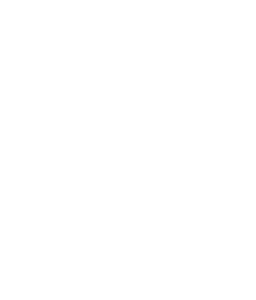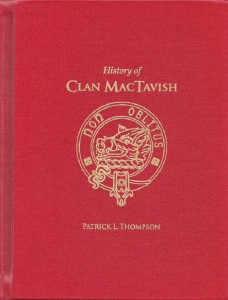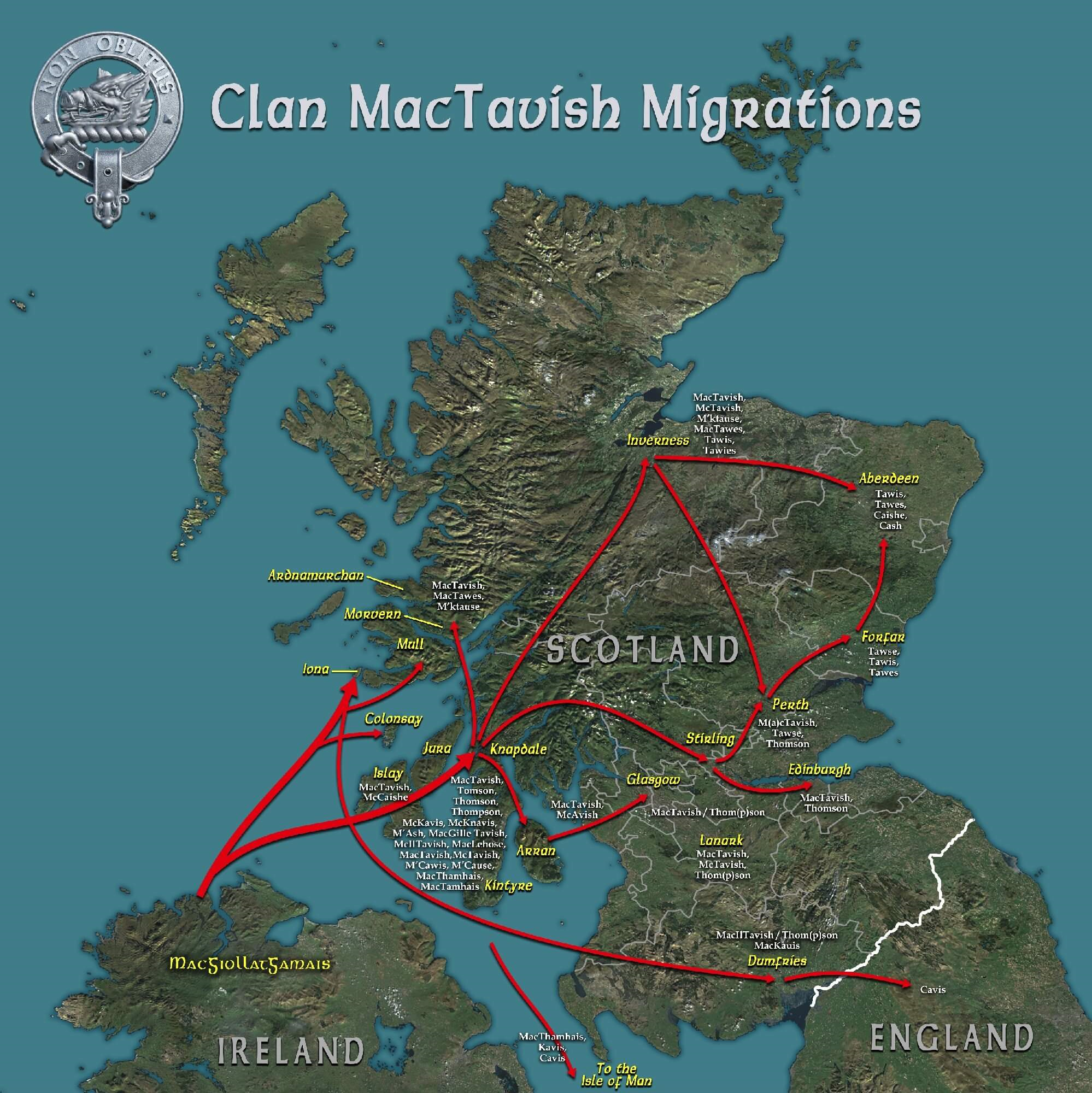
 Unless otherwise indicated, all materials on this MacTavish History page are COPYRIGHTED under the Laws of the United States of America. All Rights Reserved to the authors or Clan MacTavish.
Unless otherwise indicated, all materials on this MacTavish History page are COPYRIGHTED under the Laws of the United States of America. All Rights Reserved to the authors or Clan MacTavish.
The Seannachie’s Pages
By Patrick Thompson, Seannachie to Chief Steven MacTavish of Dunardry
The Household of a Scottish Highland Chief was anciently composed of many persons who served the Chiefly family. The number of officials in a household depended upon the size of the clan and the importance of the chief. The most common were the Ard Ghilleanan Tighe (Clan Gentlemen) usually closely related to the chief. The Am Fear Brataich (Standard Bearer, who carried the Chief’s Standard, even in battle, who was escorted by his son). An Seanachaidh (Seannachie) or Am Bard, who was ranked as a chieftain of the clan (weather in truth or not), and kept the records, genealogies of the families, history of its members, made pronouncements at ceremonies and clan gatherings, and inaugurated the next Chief (Tanist or Chief in Waiting). If there was a separate Bard, he was ranked below the Seannachie in status. There were as well a multitude of other officials in what was called the Chief’s tail (household). You may find all the household offices listed in the book, The Clans, Septs, and Regiments of the Scottish Highlands, by Adam and Innes, if interested. The An Gille Mor (Armour Bearer), as well as the Luchd-Tighe (Body Guard) could be roughly translated today as the Chief’s Lieutenant.
–While multiple officials attended the Chiefly family, they only did so at certain times of the year except for a few, who were at the chief’s calling at all times. Most everyone even though holding a position, worked his/her appointed land or position as a farmer or cattle herdsman, milkmaid or shepherd, weaver or baker, during most of the year. Each member, however, had the chief’s ear – in effect an advisor.
–The Seannachie was usually a hereditary, permanent position, and he would pass on all his knowledge to either his son, or a nephew, who would be his replacement at his death. He was always present in battle, but no opposing clan’s warrior would kill him, for it was considered extremely bad luck to do so. The position ceased to be at the downfall of the Clan System after the Battle of Culloden, in 1747, when England crushed the Jacobite cause in Scotland. The Chiefs were then reduced to nothing more than landlords, their powers ceased. For over two centuries there were no seannachies, but many Highland clan chiefs revived this position, in the late 20th century to keep alive the history of their clans.
–The Clan MacTavish Seannachie position was resurrected late in 1998 by the late Chief Dugald MacTavish of Dunardry; the first modern Seannachie was Micheil (Gaelic for Michael) MacThomhais, who resides in Nevada, USA. Micheil stepped down from this position after compiling an abundance of clan history which had been lost for over five hundred years (yes that long). I became the second modern MacTavish Seannachie in 2005, when I was commissioned to the position by Chief Steven MacTavish of Dunardry. I had been Lieutenant to Chief Dugald from 1999, until his death in 2005, and when Micheil stepped down, I inherited much of the information that Micheil had discovered, as well as other related material which had been compiled by many MacTavish/Thompson relatives since 1951. I have conducted well over 20 years of research myself on MacTavish – Thom(p)son families, with some additional research on MacTavish Septs. The work I inherited, plus my own and other family member research resulted in the production of the book, History of Clan MacTavish (2012), where the major points of MacTavish clan history are explored. Chief Steven was instrumental in having me write the history for posterity, encouraging me when the task seemed overwhelming.
–Today, a seannachie serves much the same purpose as his ancient predecessors, acting as the clan historian, researcher and archivist, preserving the historical account of the clan and chiefly family, or other families within the clan (in affect a genealogist as well). In essence the seannachie is the “keeper of the conscience of the clan”.
The History of Clan MacTavish was published and copyrighted in 2012. It is available on Amazon Kindle, or in PDF format from the author.
Click on each file to reveal link…

 Weekly_Scotsman_Cradle_of_Scotland …PDF (Newspaper page used by permission of Scotsman Publications.)
Weekly_Scotsman_Cradle_of_Scotland …PDF (Newspaper page used by permission of Scotsman Publications.)
Lyon Letter _ MacTavish _ 1950 …PDF
Lyon Letter _ MacTavish _ 2000 …PDF
A Brief History of Clan MacTavish …PDF
Royal Pedigree-Cenel nDuach and The MacTavish Chiefs …PDF
Knapdalia Map 1654 …PDF (Shows the location of the old MacTavish Castle Keep in Knapdale.)
Poltalloch Writs …PDF
The Commons of Argyll_by DC MacTavish …PDF (Rights held by Duncan MacTavish relatives.)
SUN-HERALD NEWSPAPER _ Sydney, Australia_ 1955 …PDF (public domain)
Understanding MacTavish and Thomson Heraldry …PDF
Disingenuous information about Clan MacTavish …PDF
-
Substantiated in the “Disingenuous information about Clan MacTavish” PDF are the facts that the MacTavishes are indeed a Highland Clan seated at Dunardry in Knapdale, Argylshire, and the clan has existed at this location, and elsewhere, since at least 893 AD, and in reality, much longer. Members of Clan MacTavish have additionally anglicized their surname to more gentrified forms as well. Clan MacTavish is an independent clan, and is not connected to any other clan, as a sept, or cadet. (Please contact the Court of the Lord Lyon to verify, if in doubt.) The above historical extracted materials is absolute PROOF of the ancientness of Clan MacTavish, none of which was produced or written by any member of Clan MacTavish.
- Disingenuous statement 1: Thom(p)son is not MacTavish.
- Disingenuous statement 2: There is ONLY one clan officially recognized by the Lord Lyon in
Scotland as representing those of the name Thomson or Thompson. - Disingenuous statement 3: MacTavish is a cadet of Thom(p)son
- Disingenuous statement 4: Thomson is older than MacTavish
- Disingenuous statement 5: MacTavish was not recognized by Parliament as a clan. (Learn More)
- “Clan Creep” a topic, relevant to disigenuous information about clans, being discussed more often by Scottish Clans, Societies, and Organizations that both celebrate and prioritize being responsible stewards of Scotland’s history, heraldry, and heritage. The Standing Council Of Scottish Chiefs has taken positions on the issues of clan creep and sept proliferation. As found on their website: “The now fashionable pursuit of trying to turn any Scottish name into a clan risks devaluating all. It undermines and fails to respect the distinctions that run through Scottish history, and in the end, seeks to replace that history through “clan creation”. False history:false romance. Much of this may be driven by commercial considerations, though not all. To use the famous caveat, itself from the world of commerce: Beware Imitation. Standing Council of Scottish Chiefs We have plenty to be proud of. In celebrating that, there is always room for innovation. There is no need for invention. Societies and associations will normally have a council, headed by a chairma or, as is often found overseas, President. A chief can occupy that position. But the office does not turn a President into a chief.” -Standing Council of Scottish Chiefs
- Guidence from the Standing Council of Scottish Chiefs
- Council of Scottish Clans & Associations, COSCA Claymore Newsletter – [#20 07-2024 Edition (page 17)] – “For generations now, Clan Chiefs have been coming to Highland Games and Scottish festivals in the United States as Honored Guests. Those Chiefs are always surprised, and delighted, to see dozens of Clan tents, which are on show at such events. They are the very heart of such Games, a proud statement of enduring tradition. But, in recent years, the Chiefs have started to notice that a few tents are appearing under names that were never clans and never had a chief. One example of this is “Clan Thompson”, which holds itself out to be the sole authorized representative of all Thompsons and Thomsons. There has never been a clan in Scotland called Thompson. In Scotland, Thompson is considered an English name. Thom(p)son is not a recognised clan within the global clan network. The confusion in America about the status of Clan Thompson International, Inc., seems to have come about after that society received a grant of (corporate/company) arms from the Lord Lyon in Scotland. The granting of arms by the Lord Lyon to Clan Thompson International, Inc., neither recognises that there is a clan Thompson nor that the society is the only one which is the legitimate society of that name. It is not for the Lord Lyon to determine the name of an organisation which approaches him for a grant of arms. Thomson is accepted as an English language variant of the name of two existing real clans, MacTavish and MacThomas. The MacTavishes come from Argyll in the Western Highlands,and MacThomases hail from the counties of Angus, Aberdeenshire and Perthshire in the Eastern Highlands. Neither of these ancient clans claim all Scottish Thomsons for themselves…” (Read More)
- Clans and Scottish Societies of Canada, CASSOC, ‘An Drochaid – The Bridge’ news letter (Clan Thompson Society – Clan Creep) – [Vol 52, Issue 1 Spring 2024 (page 4)]
The Clan MacTavish Surname Origin and Variant Spellings …PDF
- Scottish Thompson Name is MacTavish (MacTamhais > MacTavish > Thom(p)son which is Gaelic > Anglicized > Englished)
- The surname MacTamhais is a Gaelic form of the more modern spelling of MacTavish. MacTamhais is pronounced (heard by the ear) as “Mac Tavis” in the Gaelic of Knapdale. MacTamhais is merely one “era’s spelling” of the name. The old Irish name, shown above translates in English as “Son(s) of the Devotee of Saint Thomas (the Apostle), which carries with it links to the ancient Celtic Church of Ireland and Scotland. Ancestors of the Clan were Abotts of the Holy Island of Iona.
- MacTAVISH. G. Mac Tamhais. (G. = Gaelic Anglicized: MacTamhais (MacTavish) = Thom(p)son in Englsih – MacTavish is an Anglicized spelling of the Gaelic MacTamhais, while Thom(p)son is the the modern Anglicized alias of MacTavish. The name of Clan MacTavish in Scottish Highland Gaelic is Clann MacTamhais. (Learn More)
The Sons of Thomas (Thompson, Thomson, etc), Sons of Steven (Stephenson, Stevenson, etc), and the Foxes or Todds – PDF
- The Transition of the MacGilletSamhais, MacStibhan, and Tahd Surnames – being Associated Family Names of the Clan MacTavish…How and Why Gaelic Surnames changed to Latin or Anglo-English.





